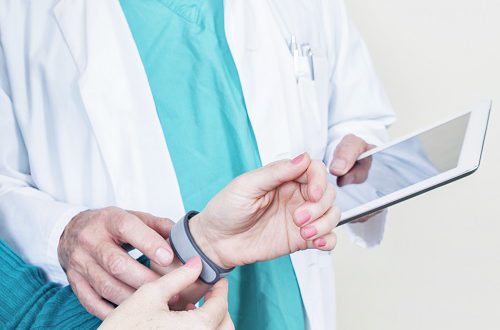Where’s the Data? New Potential for Wearable Devices
Back in 2013, after significant research and numerous recommendations from friends and relatives, I purchased a Nike FuelBand. After about two weeks of using my band religiously (yes, I ran up and down a flight of stairs until I reached my goal at 10:00 p.m., didn’t everyone?), it ended up in a drawer collecting dust with the rest of the forgotten gadgets.
The sad part is, the Nike FuelBand, along with other health monitoring devices, could potentially provide people with valuable information about their health and encourage consumers to reach their fitness goals. However, the Nike FuelBand, in particular, was glitchy, inaccurate, and was just another device I had to charge.
Taking my experience into consideration, it is no wonder that 50% of users that purchase a wearable device, put it down within a few weeks. According to the CCS Insight User Survey: Wearables, UK and US, (2013) “[Users] …mostly got bored with them, or the device did not provide enough functionality.” Many users purchase fitness trackers for the same reason that I did, 62% of consumers purchase the product for the health benefits. Over 50% of users stopped using their devices because they forgot to wear it. Of those who have never purchased a fitness tracker, over 40% of consumers believe that they do not need one. (CCS Insight, 2013). The decline in the use of wearable devices has even caused big companies like Intel to shut down their wearables department. (Klarer 2017).
However, wearable devices have the potential to provide information about public health that has never been available to researchers before. Wearables and mobile health apps can collect a huge amount of data from numerous groups of different people, including healthcare professionals, patients, and pharmaceutical companies. For example, healthcare professionals and pharma companies could use apps to communicate with patients. The potential information that these wearables can provide may even improve the way that clinical trials are done by supplying raw data to researchers without ever having to set foot in front of a focus group again. (Comstock 2017).
Above all, for mobile devices to improve, there is a need for developers to learn from the inefficiencies of previous apps and wearables. Also, with proper FDA approval, and by adopting the practices laid out by the Margolis Center for Health Policy at Duke University (2017), the data that can be obtained from the devices would be so significant that preventable lifestyle diseases could be effortlessly monitored and researched.
Device and app manufacturers, the government, clinicians, and researchers must concentrate on the following to improve these devices for data collection and analysis:
- Create a collaborative environment between patients, healthcare providers, and researchers to improve the collection of the data.
- Give app/mobile device developers measurement and collection standards for FDA regulation.
- Provide pre-competitive space in order for developers to collectively create wearables and apps.
- Ensure patients know how their data will be used and that they understand what they are consenting to when using the device (Duke Margolis Center for Health Policy, 2017)
Your wearable device may be sitting in a drawer collecting dust right now. However, one day in the future, just walking to your car may give clinicians and researchers the data they need to resolve questions about lifestyle diseases.
Works Cited
Aharon, Y. B. (2017, June 7). Small wearable devices may lead to big health care savings. Retrieved from STAT news: https://www.statnews.com/2017/06/07/wearable-devices-health-care-savings/
Comstock, J. (2017, September 15). Report: Five ways to bolster real-world evidence from mobile devices. Retrieved from Mobi Health News: https://www.mobihealthnews.com/content/report-five-ways-bolster-real-world-evidence-mobile-devices
Duke Margolis Center for Health Policy. (2017). Mobilizing mHealth Innovation for Real-World Evidence Generation. Durham: Duke Margolis Center for Health Policy.
Hoctor, T. (2017, June 16). The wearable revolution. Retrieved from Pharma Times: https://www.pharmatimes.com/web_exclusives/the_wearable_revolution_1195884
Klarer, N. (2017, September 5). What Happened to Wearables (And Where They’re Headed). Retrieved from Forbes: https://www.forbes.com/sites/theyec/2017/09/05/what-happened-to-wearables-and-where-theyre-headed/#62a21eab2de1

